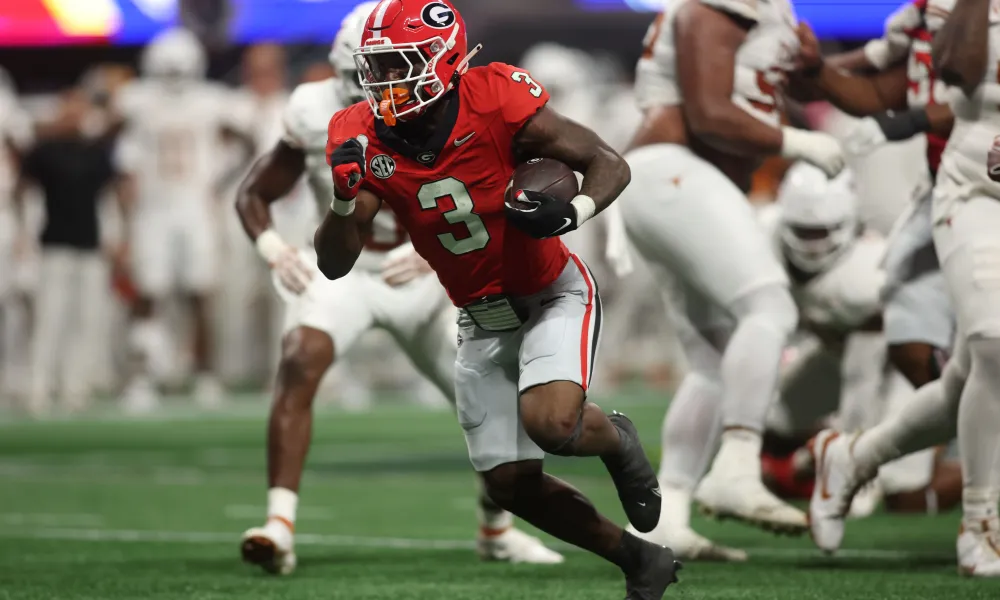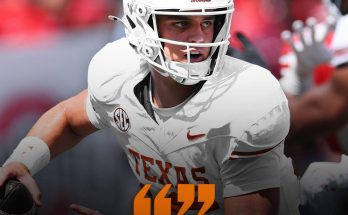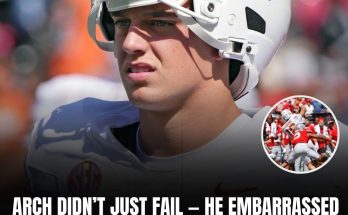Examining Georgia Football’s Running Game Under Nate Frazier in 2025
As the 2025 college football season unfolds, one of the most intriguing storylines for the Georgia Bulldogs centers around their revamped running game, now under the leadership of offensive coordinator Nate Frazier. Frazier, who took over the reins of Georgia’s offense following a series of successful seasons, has inherited a unit rich in talent but also one that faces new challenges and expectations. For a program that has long prided itself on a strong ground game, Frazier’s approach to the running back committee and offensive line development will be key in maintaining Georgia’s identity as a power-running team.
In this analysis, we take a deep dive into the factors that make Georgia’s running game under Frazier both a source of optimism and a critical focal point for their 2025 aspirations. From the evolution of the backfield to the development of offensive linemen, and from the philosophy that drives the system to the game-day execution, Georgia’s running game will undoubtedly be one of the most fascinating narratives to follow in 2025.
The Shift in Offensive Philosophy
Before examining the individual pieces of Georgia’s running game, it’s important to understand the broader offensive philosophy that Nate Frazier brings to the table. Under Frazier, Georgia’s offense has undergone a slight shift in terms of overall strategy. While the Bulldogs have historically been a team that prioritizes physicality and power in their running game, Frazier is known for incorporating a mix of traditional ground-and-pound strategies with more modern, up-tempo, and zone-read concepts. This blend is designed to keep opposing defenses on their toes and maximize the talent at Georgia’s disposal.
Frazier’s approach centers around exploiting matchups and creating space for his running backs. By implementing a variety of running schemes—including zone-blocking, power runs, and stretch plays—he ensures that defenses can’t key in on one predictable style of running. He also focuses on utilizing his quarterback’s mobility in the running game, which forces defenses to account for multiple options in the backfield.
While Georgia will still feature plenty of downhill runs and short-yardage situations that highlight their offensive line’s strength, Frazier’s influence is making the running game more dynamic. The versatility in the backfield, paired with an offensive line that is being asked to be more athletic and mobile, will allow Georgia to attack defenses in more unpredictable ways.
The Running Back Committee: Star Power and Depth
One of the most critical components of Georgia’s running game in 2025 is the talent and depth at the running back position. Under Frazier, the Bulldogs are poised to feature a committee of backs who each bring something unique to the table. This running back group is diverse in skill sets, from bruising power backs to quicker, more elusive runners capable of making plays in space. Frazier has created an environment where every running back has an opportunity to contribute and make a difference in any given game.
At the top of the depth chart, Georgia returns one of the SEC’s most promising running backs in Kendall Milton, a powerful and versatile runner who has already proven himself in key moments for the Bulldogs. Milton’s combination of size (6’1″, 220 lbs) and speed makes him a perfect fit for the downhill running schemes that Georgia loves to feature. He is a workhorse capable of taking over games with his physicality, but Frazier has also given him more opportunities to showcase his agility and vision in space, making him a dual-threat on any given carry.
Roderick Robinson II is another key piece in Georgia’s backfield in 2025. Known for his quickness and ability to burst through holes, Robinson adds a different element to the running game. While Milton is more of a north-south runner, Robinson’s ability to change directions quickly and accelerate through small gaps allows Georgia to diversify its attack. Frazier has already started using Robinson on outside runs and screen passes, allowing him to leverage his speed and agility in the open field.
In addition to Milton and Robinson, Georgia has a deep stable of young and talented running backs, including Branson Robinson, who brings a blend of power and explosiveness. Robinson has the potential to emerge as one of the program’s future stars, and under Frazier’s system, his development as both a runner and a pass-catcher will be key for Georgia’s offense. As a committee, these three running backs provide Frazier with a wealth of options and the ability to rotate fresh legs into the game, keeping opposing defenses from getting comfortable.
Frazier’s preference for a backfield committee means that Georgia’s offense is well-equipped to adapt to different game situations. Whether the Bulldogs are looking to grind out tough yards in short-yardage situations or create big plays in open space, their stable of running backs offers a wealth of flexibility and versatility.
Offensive Line Development: Key to Frazier’s System
While the running backs receive much of the attention in the running game, it’s the offensive line that truly makes everything possible. In 2025, Frazier has inherited an offensive line that is loaded with talent, experience, and depth. But even with all this talent, Frazier’s emphasis on technique, athleticism, and flexibility will be key to unlocking the full potential of the unit.
At the heart of Georgia’s offensive line is Broderick Jones, a star tackle who is poised for a breakout year in 2025. Jones’ combination of size, athleticism, and nastiness in the trenches makes him one of the best offensive linemen in the country. Under Frazier, Jones has improved his technique and footwork, and he’s now expected to be the centerpiece of a line that will need to execute at a high level to open up running lanes for the backs.
Alongside Jones, Georgia’s interior line, led by veterans like Sedrick Van Pran (center) and Tate Ratledge (guard), provides the physicality that has long been a hallmark of Georgia’s ground game. Frazier has placed a strong emphasis on developing more athletic and mobile linemen who can pull, trap, and execute outside-zone blocks. This means that players like Van Pran and Ratledge will be called upon not only to anchor the interior but to get out into space and create lanes on the perimeter for outside runs.
The evolution of Georgia’s offensive line under Frazier’s tutelage is all about adaptability. While the offensive line is tasked with winning at the point of attack in short-yardage situations, they will also be responsible for getting out into space on outside-zone runs, which requires a different skill set. Frazier’s goal is to make sure that every player on the line is able to execute multiple blocking schemes and maintain consistent performance in both power and zone-blocking situations.
Exploiting the Play-Action Game
One of the most important facets of Georgia’s running game under Frazier is its ability to set up the play-action passing attack. As a team that has historically relied on a strong running game to dictate the tempo, Georgia is in a perfect position to use the threat of the run to open up opportunities in the passing game.
With a quarterback like Carson Beck, who possesses excellent poise and accuracy, Frazier can use play-action to stretch the field vertically and create mismatches against opposing defenses. By running the football effectively, Georgia can force defenses to load the box and commit to stopping the run, which opens up opportunities for Beck to take shots downfield. This ability to control the clock and the tempo with a strong running game will make Georgia’s offense unpredictable and difficult to defend against.
The success of the play-action game, in many ways, hinges on the running back committee’s ability to create a credible rushing threat. When the offensive line and the backs are executing well, it forces defenses to honor the run, which allows Beck and the receiving corps to take advantage of favorable matchups in the passing game.
The Future of Georgia’s Running Game
As the 2025 season unfolds, Georgia’s running game under Nate Frazier will continue to evolve. With an exciting blend of experienced veterans and talented young players, the Bulldogs are in a great position to maintain their status as one of the top rushing offenses in the SEC.
The development of Georgia’s offensive line and the continued growth of their running back committee will be critical in determining the success of the running game throughout the season. Frazier’s ability to adjust to opposing defenses, utilize his backs in different ways, and keep the offensive line fresh will be key to maintaining balance and effectiveness on offense.
As the Bulldogs head into another grueling SEC schedule, their ability to dominate in the trenches and control the line of scrimmage will likely define their success. Whether grinding out tough yards on the ground or springing big plays in the open field, Georgia’s running game under Nate Frazier is poised to remain a central aspect of their identity, one that continues to strike fear into opposing defenses.
In 2025, Georgia’s running game is more than just a tool for ball control—it’s a weapon, and under Frazier’s guidance, it’s one that could lead the Bulldogs to new heights, both in the SEC and on the national stage.



